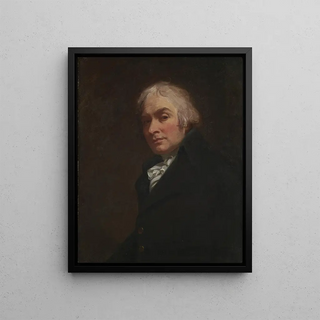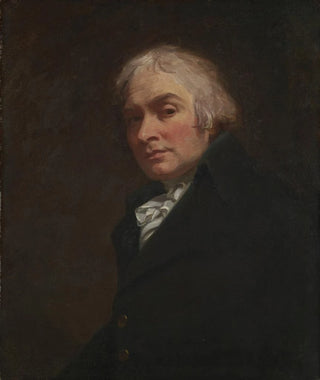Art print | Self-portrait - George Romney


View from behind

Frame (optional)
George Romney Art print is a work that invites contemplation and reflection on the artist's identity. Painted in the 18th century, this painting is much more than a simple representation of the artist himself; it is a reflection of an era marked by social and cultural transformations. Through this portrait, Romney does not just show himself, he reveals himself. The viewer's eyes are drawn to his penetrating gaze, which seems to capture the very essence of his being. This work, both intimate and universal, embodies the art of the Neoclassical period, where individuality and personal expression take a prominent place.
Style and uniqueness of the work
Romney's style is distinguished by its elegance and finesse. In this art print, the brushstrokes are delicate, demonstrating impressive technical mastery. The color palette, subtle and harmonious, helps create an atmosphere that is both serene and introspective. Shadows and lights are skillfully worked, giving the composition a depth that invites exploration of emotions. What makes this art print particularly unique is the way Romney manages to combine striking realism with a certain idealization of his own image. This interplay between truth and embellishment makes the work a perfect example of portrait art in the 18th century, where the artist seeks to transcend his own reflection to touch the universal.
The artist and his influence
George Romney, born in 1734, is one of the prominent figures of British painting. His artistic career is marked by success, but it is in the field of portraiture that he particularly shines. Influenced by the great masters of his time, such as Joshua Reynolds and Thomas Gainsborough, Romney develops a style that is his own, blending realism and romanticism. His work is not limited to his own art prints; he also captured the personality of many contemporary figures, from aristocrats to theater actors. The way he approaches portraiture has had a lasting impact on future generations of artists, who saw in him a model of authenticity and sensitivity. Through his work

Matte finish

View from behind

Frame (optional)
George Romney Art print is a work that invites contemplation and reflection on the artist's identity. Painted in the 18th century, this painting is much more than a simple representation of the artist himself; it is a reflection of an era marked by social and cultural transformations. Through this portrait, Romney does not just show himself, he reveals himself. The viewer's eyes are drawn to his penetrating gaze, which seems to capture the very essence of his being. This work, both intimate and universal, embodies the art of the Neoclassical period, where individuality and personal expression take a prominent place.
Style and uniqueness of the work
Romney's style is distinguished by its elegance and finesse. In this art print, the brushstrokes are delicate, demonstrating impressive technical mastery. The color palette, subtle and harmonious, helps create an atmosphere that is both serene and introspective. Shadows and lights are skillfully worked, giving the composition a depth that invites exploration of emotions. What makes this art print particularly unique is the way Romney manages to combine striking realism with a certain idealization of his own image. This interplay between truth and embellishment makes the work a perfect example of portrait art in the 18th century, where the artist seeks to transcend his own reflection to touch the universal.
The artist and his influence
George Romney, born in 1734, is one of the prominent figures of British painting. His artistic career is marked by success, but it is in the field of portraiture that he particularly shines. Influenced by the great masters of his time, such as Joshua Reynolds and Thomas Gainsborough, Romney develops a style that is his own, blending realism and romanticism. His work is not limited to his own art prints; he also captured the personality of many contemporary figures, from aristocrats to theater actors. The way he approaches portraiture has had a lasting impact on future generations of artists, who saw in him a model of authenticity and sensitivity. Through his work






